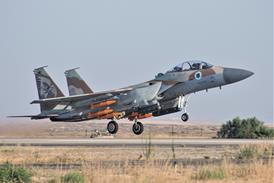Raytheon and Boeing say the US Department of Defense is going to continue the Joint Air-to-Ground Missile (JAGM) as a technology demonstration effort, with contracts to be awarded this year.
The proposed US defence budget for fiscal year 2013 calls for only $10 million to be spent on the programme, says Raytheon's business development director for advanced missiles, James Smith, with this insufficient to continue development of the new weapon.
"There just wasn't enough money to proceed into a very demanding engineering and manufacturing development programme that was supposed to take off this year," he says.
Instead, the DoD is going to use research and development funding from 2011 and 2012 - about $300 million - to keep the JAGM effort going as a technology demonstrator, Smith says. The DoD is aiming for a contract award in August 2012, he adds.
Stephen Sherrick, business development manager for Boeing's portion of the programme, says the department's top procurement official signed an acquisition decision memorandum this year. "That's what they are doing right now, they're formalising their plans," he says. A request for proposal should come soon, or the fiscal year 2011 funding will expire, Sherrick adds.
Smith says it is likely the DoD will keep the Raytheon-Boeing team and competitor Lockheed Martin on the new extended technology development effort. The department might even opt to push both weapons into service, he adds.
The focus of the new effort would not be on the rocket motor or warhead, but the guidance system - which uses three modes to hit its target, Smith says. For Raytheon, building a production version later if the programme were revived would be easy, as it uses a similar guidance kit on the forthcoming 113kg (250lb) Small Diameter Bomb II (SDB II). The SDB II is in full-scale development and should be in production by the end of 2014, Smith says.
A potential second phase of technology development might hone the new motor and warhead. The JAGM was always intended to be a modular weapon, Smith says. One option might be to start producing a missile with the new guidance system, but introduce a new warhead and rocket later.
The DoD has asked the contractors to focus as much as possible on risk-reduction efforts.
Source: Flight International




















